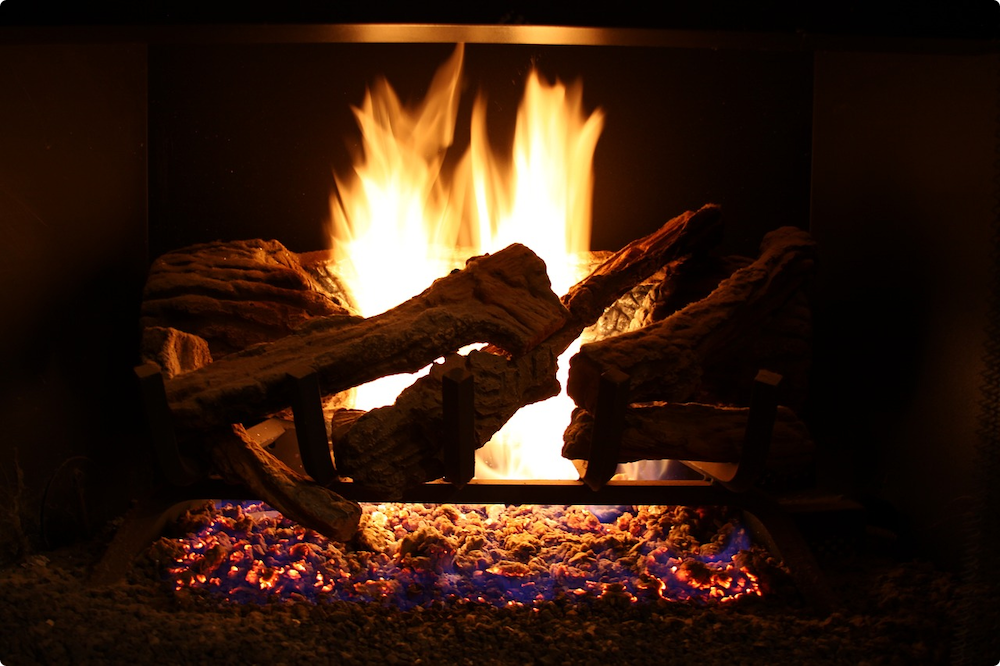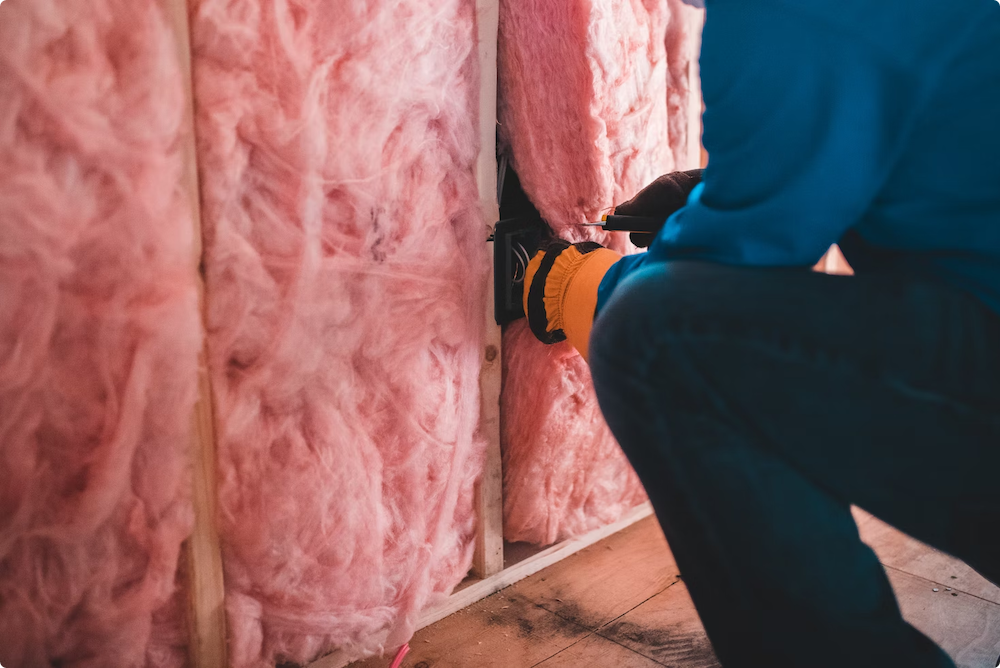Depending on who you ask, wood and gas fireplaces and wood-burning stoves are either the pinnacle of what it means to be cosy or a smoky hassle that threatens you with monotonous maintenance and a nasty cough. Two things can be true at the same time and we’re weighing up our penchant for fireside nostalgia with the true practicalities of having a fireplace today.
Pros of fireplaces:
Cosiness
At the risk of sounding very 2017, a fireplace can help increase the hygge of your home. According to Meik Wiking, CEO of the Happiness Institute in Copenhagen and author of The Little Book of Hygge: The Danish Way to Live Well, a fireplace is the headquarters of Hygge in the home. Our very own Science of a Happy Home Report found that those who find relaxation in their homes are most likely to be satisfied with them. Considering Wiking’s findings that fireplaces encourage feelings of tranquility, there are strong implications that lighting up a fire at home could have a positive impact on your wellbeing (and would explain why there are so many YouTube videos of fires just burning!).

Warmth and light
Open wood fireplaces are great at creating a localised glow of light and a comfortable ring of warmth that can heat the home through if it’s well-insulated. Wood burning stoves are an even more efficient option. But, because the heat doesn’t travel hugely far with either open fires or wood burning stoves, if you’re decided on keeping your wood fire days alight, we’d recommend limiting your usage to when as many people in your household benefit from the perks of it as possible or in smaller homes where you benefit from the heat more.

Character and value
When it comes down to the pure aesthetic nature of fireplaces, it seems we’re all still charmed by these enclaves in the wall and the possibility of a gently crackling fire. Most wood burning stoves also have large windows for aesthetic reasons. Apparently the Norwegians have also found that the larger the window, the cleaner the way the wood is burnt. Having one installed or restored in your home can add value to your property so, whether your heart is set on a classic wood burning fireplace or a fire-free focal point, it could edge up the value.
Low cost
If you’ve been more aware of the pennies throughout the cold months, it may have been on your radar that gas, wood burning stoves and open wood fires are relatively cheap to run compared to their electric counterparts. Gas has historically had the benefit of low running costs but with recent hikes in energy costs it’s not a reliable claim. Wood is definitely the most economical option if you’re looking to reduce your bills.
Cons of fireplaces:
Environmental impact
When it comes to the downsides of fireplaces, it’s really hard to avoid the reality of this one. As aesthetically pleasing and trendy as they may be, open wood fires and wood burning stoves are detrimental to the environment. Research by Imperial College London suggested that recent spikes in air pollution based on particle analysis conducted in London were down to wood or solid fuel heating. What’s more, these figures indicate that home fires could cause more environmental damage than road traffic. It’s also important to acknowledge the simple truth that just because wood is a natural material, it doesn’t make burning it a renewable source of energy.
Fires don’t go far
Lighting up your fire may offer warmth while you’re in close proximity but it’s far from the most efficient way of heating an entire house or providing enough light for reading, for example. So, for warming your whole home, you may be better off opting for central heating. And for activities like reading, sewing and cooking, we’d recommend investing in a floor lamp that fits your interiors. Wood burning stoves lit in well-insulated homes could be a more suitable option for heating through the home and, for an even more environmentally friendly option, you might want to consider heat pumps.
Safety risks with gas and wood fires
Gas fires come with the danger of carbon monoxide leaks so it’s really important that you have an up to date carbon monoxide alarm so that should anything happen, it can be swiftly dealt with. Naturally, having more gas in the home can also increase your risk of fires that can’t be contained so if you are going to opt for gas fires, make sure you know exactly what you’re doing. Consult this guide for a step by step how-to of how to start and maintain a safe gas fire in the home.
As we mentioned above, wood fires can cause damage to the environment. This impact isn't limited to the outside world. Burning open wood fires or lighting up a wood burning stove can also have a negative effect on your respiratory health thanks to the tiny, harmful particles that are emitted when it’s lit up.
Maintenance
Any fire in your home will require a certain degree of upkeep to ensure your home remains safe. If you have an open gas or wood fire that requires a chimney, you’ll need it to be cleaned professionally at least twice a year. For open wood fires, this is alongside the day-to-day chore of sweeping up the fireplace area to banish ash and soot. Wood burning stoves are a little more forgiving as they have a tray that catches the ash that can be emptied monthly – the surrounding area may get a little dusty when you open it up but it’s nothing a quick hoover won’t resolve. You may also want to consider the impact on furniture and soft furnishings in the room if you opt for a wood fire – as the smell can linger and become heavy.

Meeting in the middle
So, we’re now in no doubt that gas and wood fires are harmful to the environment and your respiratory health. But with the mindset of everything in moderation and reserving a wood fire for special occasions, the pull of a cosy atmosphere and effortless ambience remains appealing. Wherever you’ve landed on your feelings about gas and wood fires will depend entirely on your unique set of circumstances. For those of you that find yourself on the fence, we’ve got some great suggestions for alternatives to classic fires that will still make your living room sing.
Curate a focal point
There are plenty of ways to draw the eye to a fireplace that’s not in traditional use. We love the elegance and understatement of filling the space with classic pillar candles or warm-hued fairy lights. Another cosy design trend to look out for is stacking roughly chopped logs of wood to create a sense of the outdoors, indoors. The internet is awash with ideas for how to retain your fireplace as a feature without lighting it up – if you’re seeking more inspiration, Pinterest is our go-to tool.
Insulate better
If your reasoning for having an active fire in the home has been to keep it warm at a low cost, it may be time to test, address and invest in your home’s energy efficiency instead. A huge number of houses in the UK have infrastructure that lets air easily escape out or creep in. One of the most important places to insulate is your loft or your attic to counteract this leaking. Being situated directly underneath the roof, an attic can cause a quarter of all heat loss. By insulating this area, you’ll be able to keep heat in during the winter and out during the summer. This can help improve the overall energy efficiency of your home. If you’re not sure where to begin, learn more about how to check your home’s insulation.

Go electric or choose a balanced flue fire
If your heart is set on the warm glow of flames to frame your room, you might want to consider alternatives to the classic gas or wood fire. Balanced flue gas fires take air from outside your home via a pipe and are sealed off from the rest of the room by a glass panel. The benefits of this are that you don’t need a chimney, the efficiency is greater than a traditional open gas fire, they’re relatively easy to install and you still get the comforting ambience you’ve been seeking.
The aesthetic of electric fires has previously had a bad reputation but we think that’s a pretty outdated notion – there’s a huge range of designs so you can find one that fits your fireplace perfectly. What’s more, you’ll hardly ever need to clean them, you don’t need a chimney so they’re easy to install and – used thoughtfully – they don’t have huge running costs.
If you’d like to speak to one of our in-house experts to see what renovation options could be on the cards for your property, don’t hesitate to book in a free advice call or check out our portfolio page for interior inspiration.
























